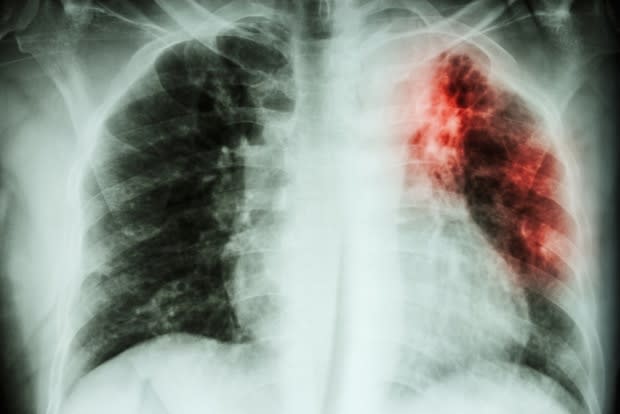As Manitoba fights highest tuberculosis rates in the country, researchers say better data offers an antidote
In a province with the highest rates of active tuberculosis in Canada, Manitoba researchers say more data and better tracking of the potentially deadly disease could help stem the spread.
University of Manitoba researchers partnered with First Nations to analyze all reported cases of tuberculosis in Manitoba from 1999-2014.
Their study, Exploring Tuberculosis Treatment, Management, and Prevention in Manitoba's Administrative Health Data, looked at patient data from the provincial TB registry and information from the Manitoba Population Research Data Repository.
"The data tells us a lot about who in Manitoba has TB and what health services these people receive. However, there's still room for improvement," lead author Lisa Lix, U of M Canada Research Chair in methods for electronic health data quality, said in a statement Tuesday.
"There is no way to count the total number of patients with latent TB infections in the province, but the repository can tell us how many of these patients are receiving treatment."
Two of the main findings were that Manitoba has to do a better job of identifying and diagnosing tuberculosis early on, and more funding is needed for research and to help bolster disease monitoring technology in the province.
The research also showed higher rates of tuberculosis in northern communities and First Nations people.
"TB is a disease of poverty, and there must be changes," said Chief Sheldon Kent, chair of the First Nations Health and Social Secretariat of Manitoba, in a statement.
That includes changes, he said, in "First Nation people's living conditions, especially housing and clean water, and First Nations leadership in decision-making regarding the design and delivery of health services to our people."
Active versus sleeping TB
Active tuberculosis is a contagious lung disease born out of an infectious bacteria that can be spread when a person coughs or sneezes.
There's also the "sleeping," or latent, kind of tuberculosis. Those living with this form of the disease don't necessarily feel ill and aren't contagious, though the disease can progress into a life-threatening infection without treatment.

The World Health Organization has called on jurisdictions around the world to eliminate tuberculosis by 2035.
More than 80 per cent of patients with the latent disease need to finish treatment to effectively stop the spread, the WHO says.
The problem is that only 70 per cent of Manitobans with the dormant form completed treatment during the 15-year study period.
A closer look at the population showed only about 60 per cent of Manitobans older than 45 reported completing a 180-day treatment course for latent TB, compared to over 70 per cent for those under that age.
And a longer, 270-day course of medication saw less than 70 per cent of Manitobans aged 19-44 complete treatment — a higher success rate than those below the age of 18 or older than 45.
First Nations, elderly less likely to finish treatment
The research also showed First Nations people diagnosed with latent TB were less likely to finish treatment than the general population, and the gulf widened depending on the prescribed length of treatment.
More than 75 per cent of patients in the general population diagnosed with latent TV completed a 180-day course of medication, compared to just over 65 per cent of First Nations patients.
For a longer, 270-day course of medication, less than half of First Nation patients with latent TB completed a 270-day supply of medication, compared to nearly three-quarters of patients from the general population.
We can make better use of the data we have to identify active and latent TB patients across Manitoba and how they use the health-care system. This will make it less likely that the diagnosis of TB will be missed or delayed. - Lead author Lisa Lix
"This is why it's important that people with both active and latent TB infections get the right medications to wipe out the bacteria," study co-author Dr. Pierre Plourde, integrated tuberculosis services medical director and medical officer of health for the Winnipeg Regional Health Authority, said in a statement.
"People with latent TB need to be on medication for several months to completely get rid of their infection, even while they don't feel sick. It can be difficult to stick with the treatment for that long, especially when the side effects may cause the person to feel unwell."
Lix said the study shows comprehensive patient databases are "essential" surveillance tools that will help inform local health-care strategies and help to end tuberculosis.
"We can make better use of the data we have to identify active and latent TB patients across Manitoba and how they use the health-care system," she said in a statement.
"This will make it less likely that the diagnosis of TB will be missed or delayed, and care for TB patients can be provided quickly."

